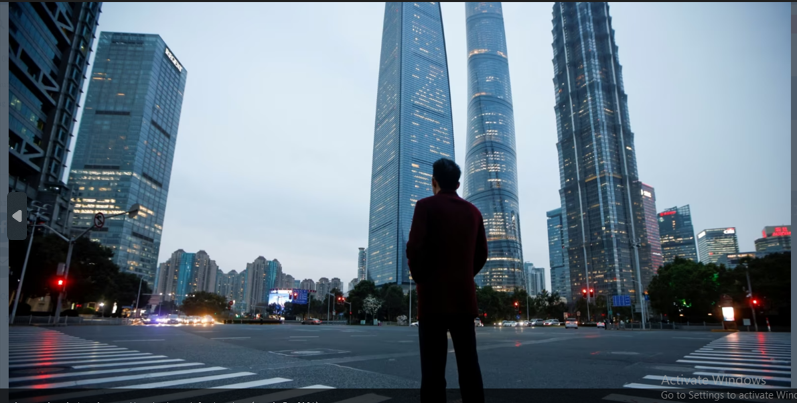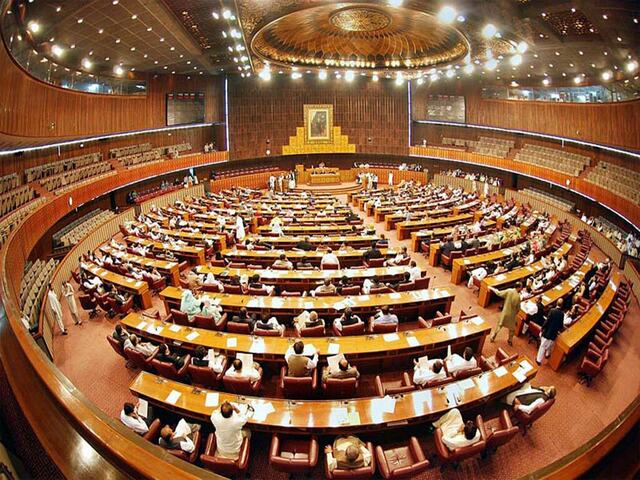Editor’s Note: This is an opinion piece written by Deng Yuwen for Voice of America. This guest commentary does not reflect the views of Voice of America. Reprints please indicate that they are from Voice of America or VOA.
Seeing this topic, some people may say, is the word “forever” too absolute? Yes, I think it should be so.
The National Bureau of Statistics of China recently announced the population data for 2022, which is an “accidental” decrease of 850,000 people compared to 2021. The “surprise” is because it exceeded many people’s expectations. I thought this day would not come so soon. This is the first time that China’s population has decreased in 60 years. Therefore, as soon as the data was released, it attracted widespread attention and discussion from the international community.
Negative population growth not only means that China’s long-standing “throne” of the world’s most populous country will be changed but also from an economic point of view, it also shows that China has bid farewell to high growth forever. When I say high growth, I mean that the economic growth rate is above 7%. Most developed countries and countries with economic growth have experienced a period of high growth, but China is more prominent in this regard. From the beginning of the reform in 1978 to 2015, in 37 years, except for the three years of 1981, 1989, and 1990, it was as long as 34 years. The annual growth rate is above 7%, and most of the years exceeds 9%. This can be called a miracle in the history of world economic development, although its price is also very heavy.
The last time China’s economic growth rate exceeded 7% was in 2021, reaching 8.11%. If this is a growth achieved in a normal year or under normal conditions, it is gratifying, but it will only grow at an ultra-low rate of 2.24% in 2020. It has been achieved on a basic basis, so even if there is a high growth rate, it will be short-lived and has no discussion value. Moreover, this high growth rate will be the last time that China’s economy has grown by more than 7%. After that, due to the population entering the negative growth range, it will not appear again.
The demographic dividend contributes as much as 27% to China’s economic growth.
When explaining China’s high growth over the past 34 years, a consensus among academic circles is the factor of demographic dividend. Although China implemented the evil “one-child policy” in the early 1980s, it will take 20 to 30 years for this policy to have a substantial negative effect on economic growth. In this process, China’s huge population, especially the young labor force, has greatly helped economic growth. People will go through several stages in their life, including infants, young adults, middle-aged adults, and old age, and they have different meanings for economic growth. Infants and toddlers represent the future and hope of the country, teenagers mainly consume, and middle-aged and middle-aged people reflect the value of labor.
The wealth creation of human society is mainly completed at this stage, so it has the greatest significance for economic growth. In old age, labor began to fade away, and consumption was the main focus, but the motivation and ability to consume were not as good as those in adolescence. The so-called demographic dividend refers to a large proportion of the working population, a low dependency ratio, strong creativity in social wealth, and a relatively obvious situation of high savings, high investment, and high growth in the entire society.
The long period since the reform has shown such a significant demographic dividend. Thanks to the rapid growth of the working-age population before and at the beginning of the reform, it provided an almost unlimited supply of labor resources, which made the price of labor very cheap (of course, this is also caused by the low human rights advantage that scholars such as Qin Hui said), It has laid a strong human resource foundation for China. It also coincided with the opening of the country, integration into globalization, and the vigorous development of the private economy.
After the 1990s, the labor force was able to flow freely. China then became the “world factory” and formed a labor-intensive industrial structure. Hundreds of millions of working people deposit their hard-earned money in banks, and the banks lend the money to businesses, as well as the government, for investment. China’s high savings rate and the large proportion of investment in the economy have been unmatched by other countries until now. It can be said that behind the “miracle” of high economic growth is precisely the high labor participation rate. According to different estimates by scholars, the contribution of the demographic dividend to China’s economic growth ranges from as low as 15% to as high as 27%. %.
The economic growth over the past 40 years also corresponds to the huge role played by the demographic dividend. The first 30 years were when the demographic dividend exploded, and the Chinese economy grew at an average annual rate of more than 10% during this period. Since 2012, we have officially bid farewell to the growth rate of more than 8%. In 2011, the GDP still had a growth rate of 9.55%, which dropped to 7.86% in 2012. In the next three years, by 2015, it can still maintain 7.77%, 7.43%, and 7.04%. However, in 2016, it slipped into a growth space of 6%, until 2018, and broke 6 again in 2019, reaching 5.95%.
The reason is that in the next 10 years or so, the consequences of the long-term implementation of family planning have emerged. The working-age population has gradually decreased after reaching its peak, and the demographic dividend has gradually entered the process of decay. The weakening will naturally enter the descending channel. Not to mention the three years after 2020, the epidemic situation will be superimposed. Due to the overlapping epidemic factors, the average growth rate is only a little over 4%. Among them, 2020 will be the worst since the reform, and 2022 will be the second worst.
Interestingly, China’s economy has shifted from high growth to medium to high growth and then to low growth, which coincides with the 10 years of Xi Jinping’s administration. This is not a simple coincidence, but an inherent necessity. As pointed out above, the three-year epidemic is an extreme situation, because even in the era of Mao’s household registration and ticket, even in the three years of the Great Famine, the government’s restrictions on people’s movements did not reach these three years. So, from this perspective, the three-year epidemic is a rare situation, which can be ruled out.
Then, over the past seven years, the economy has entered the low-to-medium growth stage, which is the result of a series of factors. The intensity and time are more than before; the actual implementation of the practice of supporting the state-owned economy and restricting the private economy, the policy of suppressing platform companies to regulate capital; the poverty alleviation and common prosperity of real money; and the economic decoupling and supply chain decentralization caused by the confrontation between China and the United States Wait.
How these factors played a catalytic role in the recession of the Chinese economy in the Xi era requires solid data support, so I don’t care here; but one thing is certain, after more than 30 years of high economic growth, it owns The internal structure will also have a lot of wear and tear and needs to be adjusted, just like a train running at high speed for a long time, it has to slow down or even stop for maintenance, otherwise, likely, some link cannot withstand the high-speed operation and breaks, resulting in the tragedy of car crash
The basic structural factor that technological progress cannot make up for the disappearance
of the demographic dividend is that the Chinese economy based on the demographic dividend is an extensive labor-intensive industrial structure, and it is at the low end of the global industrial chain. Almost like China, a country with a labor force advantage must go through the road during the economic take-off stage, but the consequences are damage to the rights and health of laborers, general pollution and damage to the environment, and increasing inequality in income distribution. It’s just that in China, due to the strength of the government, the lack of respect for human rights, the greater exploitation of labor, and the hesitation on whether to adjust the family planning policy, the consequences are more severe than in other countries that have experienced this stage of development. This is China has been clamoring to stimulate consumption and domestic demand, but it cannot be stimulated, and the root cause is that it has to passively rely on investment and exports.
Therefore, to change this labor-intensive, low-value-added industrial structure, the disappearance of the demographic dividend is a driving force. Xi Jinping has also seen the endogenous structural problems of the Chinese economy. He knows that the demographic dividend will disappear sooner or later. He wants Liu He to help Him design the supply-side reform and pursued the transformation and upgrading of industries. Given that China’s low-income groups account for more than 60% of the population, a better choice is to continue to maintain the demographic dividend while improving the industrial structure. To maintain the demographic dividend, family planning must be fully liberalized, and the family planning policy must be abolished.
However, it may be that Xi is worried that the full liberalization of childbearing will lead to more children for the poor, which will lead to a shortage of population and resources and affect poverty alleviation and the early planning of modernization. Realized; perhaps he was misled by those scholars and officials who advocated strict population control. These people have long held the right to speak on population policy, advocating that even if the “one-child” population policy is implemented, China’s demographic dividend will still exist for a while, and it will not be fast. The disappearance made Xi hesitate when the harm of the “one-child” population policy had already appeared and should be abolished decisively, and only made partial adjustments. It was not until the year before last that women of childbearing age were allowed to have three children, delaying the opportunity.
Xi’s hesitation caused China’s demographic dividend to be exhausted prematurely. On the other hand, he prescribed the wrong prescription for industrial transformation and upgrading. Starting from the rule of the Communist Party, he believed too much in the power of state-owned enterprises to guard against the private economy and capital, which led to the supply-side reform has not achieved much effect so far but has made the situation worse. This is the situation of China’s economy today.
As early as 2012, Justin Yifu Lin, a Chinese economist who was the vice president of the World Bank, took Japan, Singapore, Taiwan, and South Korea as examples, and proposed that China still has 20 years of the potential economic growth rate of 8%. Lin’s view can of course be debated, but judging from the actual economic growth rate in the first seven years after Xi Jinping came to power if he abolished the family planning policy early and focused on the economy instead of politics, in the past 10 years (the last three years) the economy can grow at an average annual rate of 8% if there is no epidemic in 2019. But he screwed it all up.
Economists now have an optimistic estimate of China’s potential growth rate for the time to come, which is only 6%. This is still based on the premise that the demographic dividend will not disappear too soon. But negative population growth has become a reality, and this trend is irreversible. Therefore, even if Xi Jinping no longer tosses, the Chinese government will focus on construction as it did during Jiang Hu’s time, considering the high percentage of demographic dividends in China’s economic growth, technological progress, and the quality of the labor force. The increase cannot fully make up for the disappearance of the demographic dividend. It is doomed for China to return to a high growth rate of more than 7%.






good knowledge